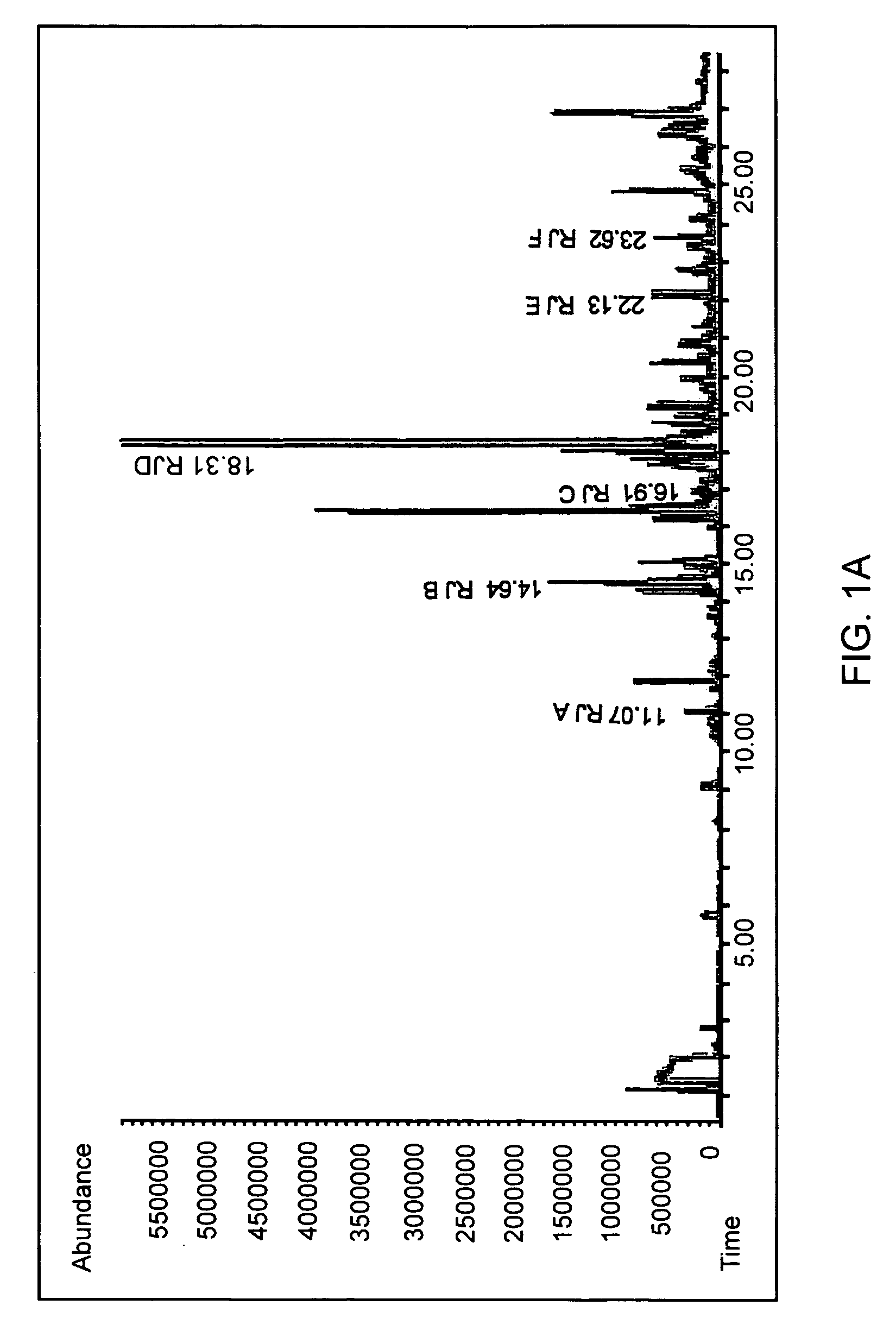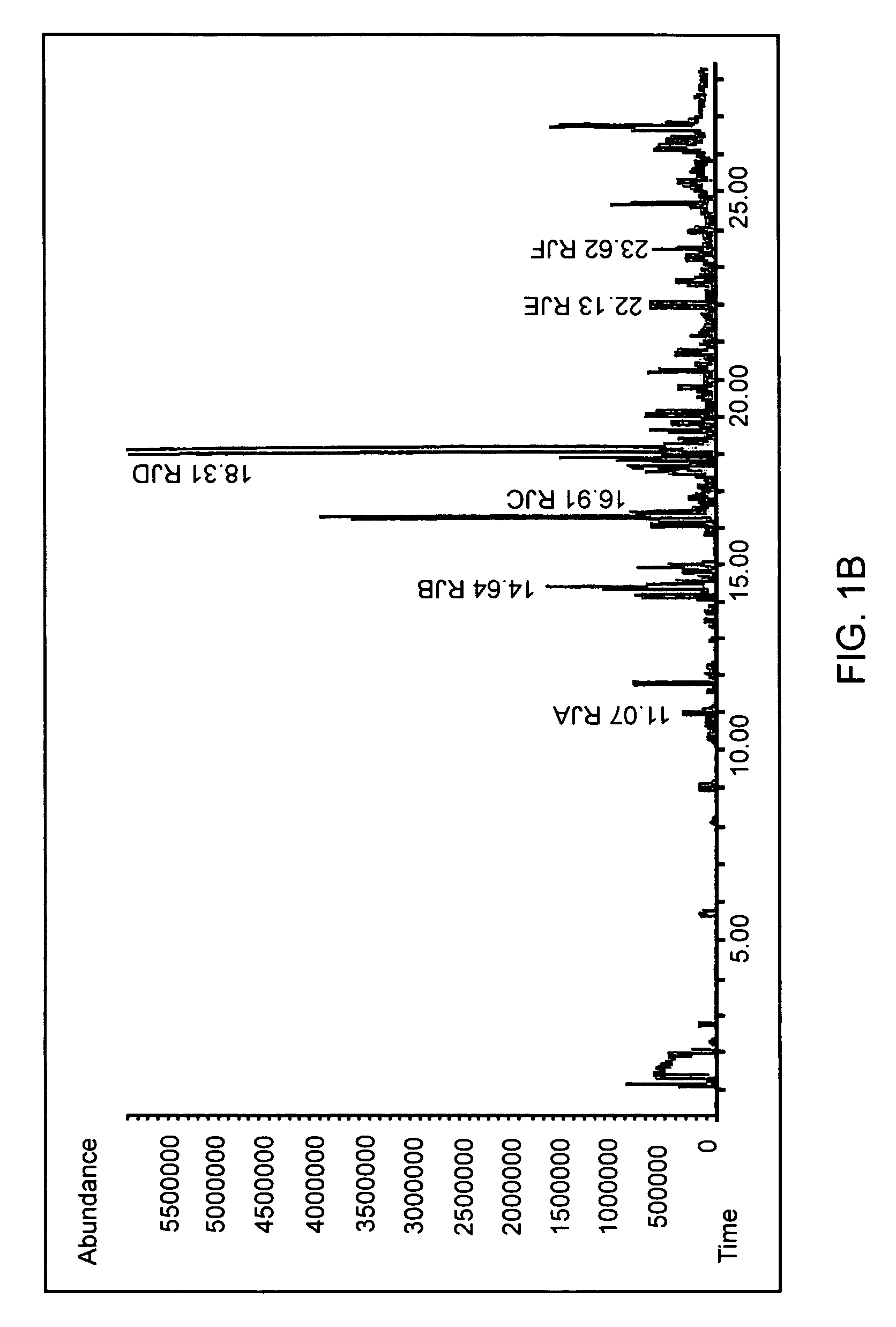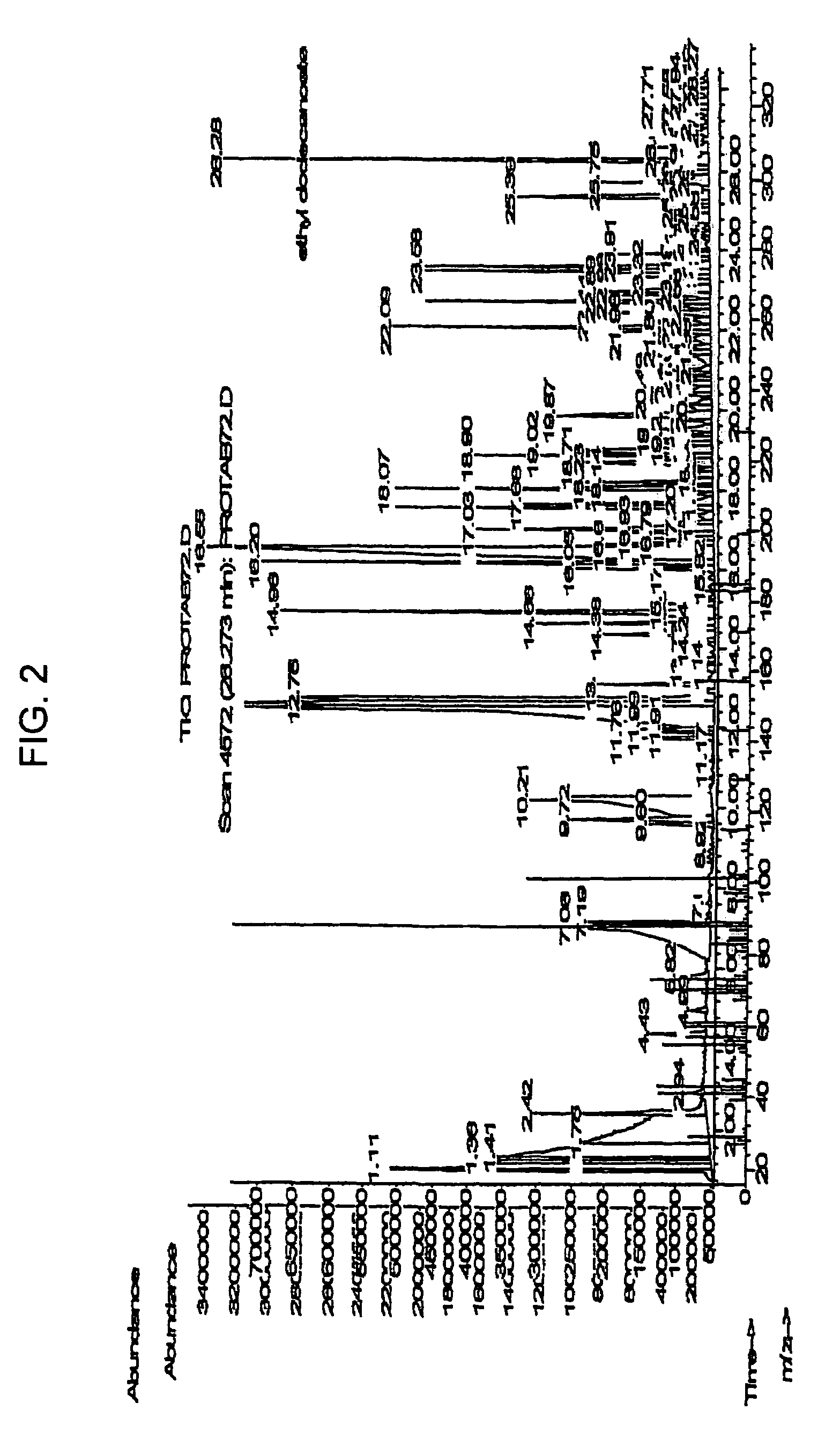Detection of disease by analysis of emissions
a technology of emission detection and detection of disease, applied in the field of detection of disease by emission analysis, can solve the problems of limiting epidemics, morbidity and mortality, and viral infections of the gastrointestinal tract, and achieve rapid diagnosis, modification or enhancement of the vapour profile of the volatiles contained in the volatiles, and rapid determination of the aetiology of diarrhoea.
- Summary
- Abstract
- Description
- Claims
- Application Information
AI Technical Summary
Benefits of technology
Problems solved by technology
Method used
Image
Examples
examples
[0051]Flatus was obtained from stool samples from 38 subjects with diarrhoea and from 6 healthy controls. For each subjects, the aetiology of the diarrhoea was determined by routine microbiological assessment (n=35). Three of the subjects had an exacerbation of inflammatory bowel disease involving the colon. Diarrhoea (ca 0.5 ml) and semi-solid excrement (ca 0.25 g) samples were portioned in sealed headspace vials (Supelco, 10 ml) designed for solid phase microextraction (SPME). Samples were equilibrated in a water bath (37° C.) and their volatile compounds entrained from the headspace on to SPME fibre (Supelco, 85 μm Carboxen / poiydimethylsiloxane, 12 hrs). Any samples not extracted within 1 hour of collection were stored in the vials at −18° C. Sample volatile compounds were desorbed from the fibre thermally via splitless injection (HP 5890 II, 1.5 mins, 250° C.) onto a thick film column (Supelco, SPB-1 Sulfur, 30M×0.32 mm β 20). Volatile compounds were eluted from the column (35° ...
PUM
 Login to View More
Login to View More Abstract
Description
Claims
Application Information
 Login to View More
Login to View More - R&D
- Intellectual Property
- Life Sciences
- Materials
- Tech Scout
- Unparalleled Data Quality
- Higher Quality Content
- 60% Fewer Hallucinations
Browse by: Latest US Patents, China's latest patents, Technical Efficacy Thesaurus, Application Domain, Technology Topic, Popular Technical Reports.
© 2025 PatSnap. All rights reserved.Legal|Privacy policy|Modern Slavery Act Transparency Statement|Sitemap|About US| Contact US: help@patsnap.com



